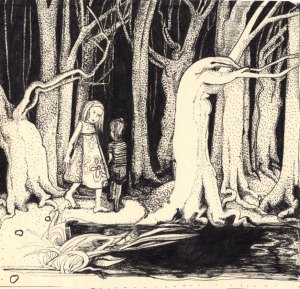 Writing is hard. Anyone will tell you that. Just sitting down and squeezing your brainthoughts onto a page via your fingers freaking HURTS. And I’m sure that non-fiction has its own hellish idiosyncrasies and each genre no doubt has its unique challenges. Sci-Fi writers probably struggle to think of cool names for non-existent tech, and fantasy authors most likely struggle with…I don’t know, how pointy elf ears should be.
Writing is hard. Anyone will tell you that. Just sitting down and squeezing your brainthoughts onto a page via your fingers freaking HURTS. And I’m sure that non-fiction has its own hellish idiosyncrasies and each genre no doubt has its unique challenges. Sci-Fi writers probably struggle to think of cool names for non-existent tech, and fantasy authors most likely struggle with…I don’t know, how pointy elf ears should be.
The mystery genre of course, has a set of rules within which the author must work. We have a contract with our readers. If you follow me through this created world I will reveal to you the evildoer. He or she might be killed, arrested, or skip town and get away, but you will know whodunit by the end. Agatha Christie in 1926 [spoiler comin’!] turned this on its ear by having the first-person narrator of The Murder of Roger Ackroyd turn out to be the killer. She flipped that shit around, but she didn’t break the promise of revealing the killer.
Another rule of mysteries–that not all writers follow–is that it has to be possible to ascertain the identity of the killer. The reader must be given all the evidence available to the sleuth. Otherwise it’s not a fair game. Now this evidence may be tainted, witnesses can lie, and mistakes can be made, but part of the appeal of the genre is that the reader gets to actively participate in the story.
The murderer also must be available for suspicion. By that I mean that they have to be on the page before their guilt is revealed. They may never be an official suspect subject to police interrogation, but you can’t, in the final chapter, pull a murderer out of your ass. “Oh wow! It turned out to be a guy never introduced and never suspected! He just appeared on the courthouse steps and confessed.” The only way that scenario would work is if it’s a false confession that allows the real killer (a character who has already appeared) to escape detection for a while longer. That’s a twist. Otherwise, it’s just a ripoff.
Going back to the huge twist in The Murder of Roger Ackroyd, if you read the book a second time the signs are there all along that the narrator is the killer. Christie didn’t screw over her readers, she just fooled them in a very clever way. Maybe some portion of readers figured it out, but I didn’t. And I was one of the people who took one look at Jaye Davidson in The Crying Game and said, “That’s a dude.” By leaving these clues…this trail of breadcrumbs I call it, Christie may have surprised readers, but she didn’t break the rules.
So when writing a mystery, you’ve gotta leave the crumbs. And it’s difficult! If they’re too obvious, you give away the game. When I figure out a mystery early in the book, yes I feel very clever, but then I’m just slogging through the rest of it wondering why the detective is such a dumbass. And if I think your sleuth is a dipshit, I’m not likely to read the next book in the series.
The reverse is also true. If the breadcrumbs you leave are too subtle your reader will miss them completely and feel just as ripped off as if you hadn’t put them in at all. They have to notice them, but not register as clues until the end.
The trouble is that reader perception of your breadcrumbs is subjective. What seems middling obvious to the writer can be completely missed by a reader. One of the things I ask my alpha readers is, when did you figure it out? I like readers to figure it out…just not too soon. Sometimes I ask early readers to stop every couple of chapters and write down who they think the killer is. That’s a good way to track how my breadcrumbs are working. In my second Lexy Cooper book, Pwned, I edited out a breadcrumb that I hadn’t thought was very obvious when a reader told me that was the point she knew who the killer was.
The perfect breadcrumbs are ones that you can only see when you know what to look for, preferably on that second reading. And then you have a good chuckle and say I can’t believe I missed that! And you tip your hat to the writer that hid those clues in plain sight and managed to surprise you at the end.

1 Comment